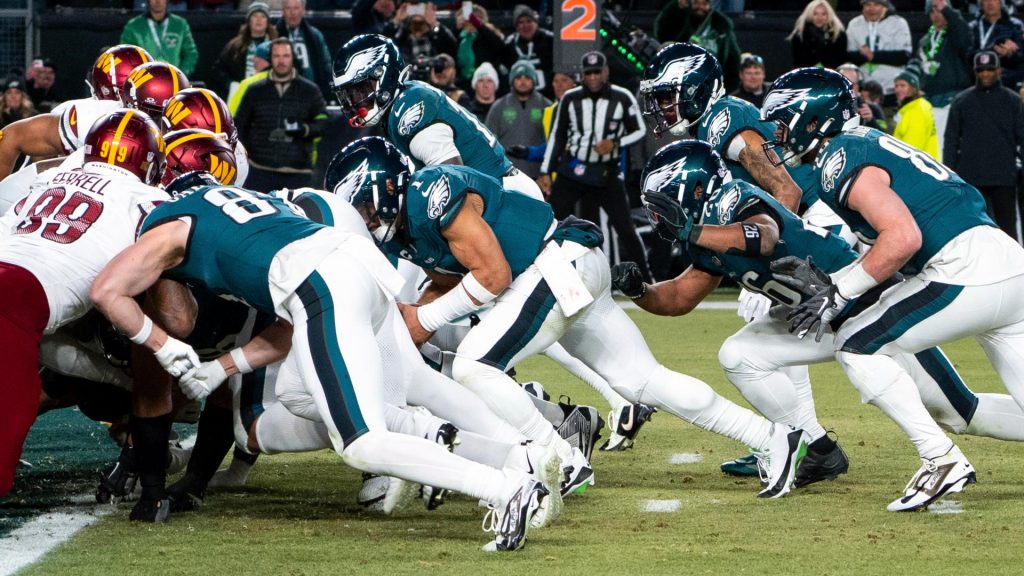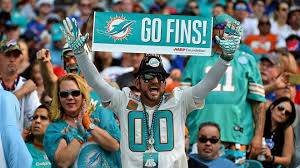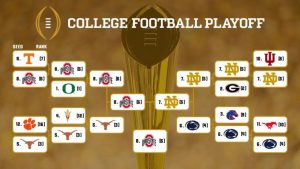
Each spring, as NFL owners gather to review, revise, and regulate the rules of football, certain proposals rise above the rest to stir conversation, controversy, and—inevitably—debate. At this year’s spring owners meetings, one topic yet again dominates the agenda: the potential elimination of the “tush push,” a short-yardage play that has become as strategically polarizing as it is physically brutal.
Despite the league’s continued flirtation with banning the quarterback push—most famously perfected by the Philadelphia Eagles—the NFL has once again revived the debate over whether this rugby-style play has a place in the modern game. The proposal, put forth by several team executives and supported by player safety advocates, reflects a growing sentiment among coaches, defenders, and league officials who believe the play is “too automatic,” “not football,” or simply “unsafe.”
On the other side are traditionalists, analytic minds, and some of the very teams who have benefited from the play, arguing that its effectiveness is a product of strategic excellence, physical dominance, and proper coaching—not a loophole in need of closure.
Let’s dive deep into why the tush push is once again under the microscope, what has changed since last year, and what could ultimately tip the scales toward a historic rule change.
What Is the “Tush Push”?
To understand the heart of the debate, it’s important to define the play in question.
The “tush push”—also known as the “quarterback push,” “brotherly shove” (as Eagles fans affectionately call it), or “sneak push”—involves a quarterback, most often under center, taking the snap and being physically propelled forward by one or more teammates who push from behind. The goal is to gain a yard or less, typically on third- or fourth-and-short, or at the goal line.
The Eagles, led by quarterback Jalen Hurts, brought the play into national prominence during their 2022 and 2023 campaigns. With Hurts’ leg strength, a dominant offensive line led by Jason Kelce and Lane Johnson, and a finely tuned execution, Philadelphia converted the play at a staggering clip—over 90% efficiency in some seasons.
Soon, other teams began emulating it. But few achieved the Eagles’ success, and many coaches voiced frustration with its effectiveness—and potential dangers.
Why Is It Controversial?
1. Player Safety Concerns
The most frequent argument for banning the tush push is that it puts players at risk—especially those in the trenches. Offensive and defensive linemen engage in low, high-force collisions while multiple players drive or resist a wedge of bodies pushing forward. Critics suggest that this unnatural surge increases the chances of neck, back, and lower extremity injuries.
NFL Executive VP of Football Operations Troy Vincent addressed this directly at the spring meetings, stating:
“Our data shows that while injury rates on these plays are not drastically higher than others, the mechanism is cause for concern. We’re constantly evaluating how to ensure players are not unnecessarily exposed to cumulative blunt force trauma.”
The NFL Players Association (NFLPA), however, has not taken a uniform stance. Some linemen feel empowered by the play, seeing it as a testament to their strength and discipline. Others, particularly defenders, feel it’s unfair and dangerous.
2. “It’s Not Football” Argument
Detractors argue that the tush push veers too far from traditional football principles. Hall of Fame coach Bill Cowher once called it “a rugby scrum, not a football play.” The perception is that rather than winning the line of scrimmage through timing, technique, or creativity, teams simply mash forward using brute force.
The counter-argument? Football is a game of leverage and strength. Every goal-line play involves physical dominance. Banning the tush push, supporters say, would be like outlawing jump balls in basketball or checking in hockey.
3. It’s Too Effective—For One Team
Perhaps the most cynical argument in the mix is the idea that the NFL wants to ban the tush push because the Eagles are too good at it. Philadelphia’s remarkable conversion rate has made the play almost unstoppable in certain situations. This consistency gives them a competitive edge not easily replicated by other teams.
Some coaches have openly stated they support banning the play because it’s “unfair” that only one team executes it well.
As Kyle Shanahan of the 49ers put it:
“If it were a common play with league-wide success, we wouldn’t be having this conversation. But one team found the cheat code, and now everyone else wants it banned.”
Who Supports the Ban?
At this year’s meetings, the teams most vocally supporting the proposal to eliminate the tush push include the Atlanta Falcons, Miami Dolphins, and Pittsburgh Steelers. Some cite competitive fairness; others raise player safety concerns. Still others, like the Dolphins’ Mike McDaniel, argue the play stifles creativity in short-yardage situations.
A growing number of defensive coaches—especially those with younger, injury-prone defensive lines—also back the ban.
NFL Competition Committee Chairman Rich McKay acknowledged that support for the rule change has increased compared to 2023.
“We’re closer than we’ve ever been. The debate has matured, and it’s not just about one team anymore. We’re looking at trends across the league.”
Still, it’s unclear if there are enough votes to pass the change. Rule alterations require the approval of 24 of the league’s 32 owners.
Who Wants to Keep It?
Philadelphia, unsurprisingly, has spearheaded the campaign to preserve the tush push. Head coach Nick Sirianni and general manager Howie Roseman have lobbied behind the scenes, arguing that the play is emblematic of their identity and preparation.
“It’s not a gimmick. It’s something we’ve worked at endlessly,” Sirianni told reporters. “You can’t take away something just because we’re good at it.”
Other teams in support of keeping the play include the Buffalo Bills, Detroit Lions, and Dallas Cowboys. Each of these organizations has experimented with the tactic or sees its strategic value as part of an evolving game.
Notably, the Kansas City Chiefs—who seldom use the push with Patrick Mahomes due to injury concerns—remain publicly neutral but have hinted at philosophical opposition to banning “legal football actions.”
Alternatives on the Table
If the league doesn’t outright ban the tush push, there are a few middle-ground ideas being floated:
- Limit the Number of Pushers: Restricting the number of players allowed to push the quarterback to one.
- No Pushers Behind the QB at Snap: Requiring that players pushing the QB must line up beside or in front, not directly behind.
- Make It a Dead Ball: Declaring the ball dead if the QB is pushed forward by another player (as was the rule prior to 2005).
- Add Replay Scrutiny: Letting officiating crews review whether the QB advanced due to push or forward momentum on his own.
So far, these options have not gained significant traction, as they add complexity to officiating. The Competition Committee’s preference is to keep rules simple and enforceable.
A Battle Between Tradition and Evolution
The ongoing push-pull around the tush push reflects a deeper philosophical battle in the NFL: tradition vs. evolution.
Historically, the league has embraced innovation, from the West Coast offense to RPOs to jet sweeps. But every advancement that tilts the competitive balance—especially one hard to defend—triggers a counter-effort to curb its influence.
Remember, the NFL once banned leaping over the line on field goal attempts due to safety concerns. They outlawed wedge blocking on kick returns. And they’ve consistently legislated against plays they believe give undue advantage, especially when it relates to player well-being.
Whether the tush push joins that list depends on where owners fall between embracing innovation and preserving a level playing field.
What Happens Next?
The Competition Committee has tabled the formal vote for later this offseason, but early polling indicates it will be a close decision. Some believe the league will wait until the 2025 offseason to finalize any major change, especially with player safety studies ongoing.
But the writing may be on the wall. As more teams clamor for clarification, the league faces pressure to make a definitive call.
If the tush push is banned, expect teams like the Eagles to unleash new wrinkles in their short-yardage package. If it’s preserved, look for the next generation of quarterbacks and offensive coordinators to invest even more in mastering the art of the push.
Final Thought
The debate over the tush push is about more than one play. It’s a referendum on what kind of football the NFL wants to promote: a game of strength and innovation or one where limitations protect balance and safety.
Regardless of how the final vote shakes out, the mere fact that the play continues to dominate the conversation at owners meetings shows how one seemingly minor tactic has reshaped how we think about the rules of the game.





